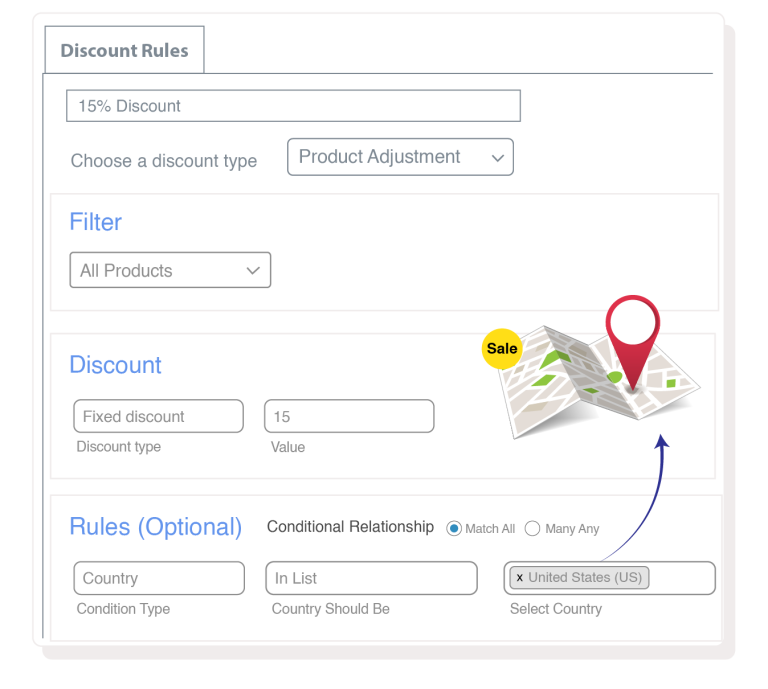In this article, we’ll explore some of the best JavaScript books for beginners, along with other resources for learning one of the world’s most popular programming languages.
In a recent survey, 70% of 90,000 people said JavaScript was their most-used programming language! This is hardly surprising, since it forms the basis of all interactive web pages, is pretty easy to learn, has so many uses beyond the Web, and supports so many styles of programming — such as imperative, object-oriented and functional.
In fact, nearly all front-end development jobs require knowledge of JavaScript. You can read more about why JavaScript is so popular and why you should learn it on this post from UC Berkeley.
- What is JavaScript?
- Top Ways for a Beginner to Learn JavaScript
- When Would You Use JavaScript?
- What to Look for in a JavaScript Book
- The Best JavaScript Books for Beginners
- Next Steps on Your JavaScript Journey
What is JavaScript?
Table of Contents
- 1 What is JavaScript?
- 2 Top Ways for a Beginner to Learn JavaScript
- 3 When Would You Use JavaScript?
- 4 What to Look for in a JavaScript Book
- 5 The Best JavaScript Books for Beginners
- 5.1 Learn JavaScript Visually
- 5.2 Beginning JavaScript
- 5.3 JavaScript: The Definitive Guide
- 5.4 A Smarter Way to Learn JavaScript
- 5.5 Head First JavaScript Programming: A Brain-Friendly Guide
- 5.6 Secrets of the JavaScript Ninja
- 5.7 Eloquent JavaScript 3rd Edition: A Modern Introduction to Programming
- 5.8 You Don’t Know JavaScript Yet
- 5.9 Learn to Code with JavaScript
- 6 Next Steps on Your JavaScript Journey
JavaScript is often referred to as “the programming language of the Web”. There’s a high chance you’ll be interacting with JavaScript every time you visit a new web page — whether you’re clicking on menus, logging in to an account, viewing image galleries and popups, and watching elements move around the page.
More technically, JavaScript is a high-level, dynamic programming language. That means the code is compiled as it’s being executed and the program can change during execution. This occurs most commonly in the web browser, with nearly every web browser having a built-in JavaScript engine.
Top Ways for a Beginner to Learn JavaScript
JavaScript is one of three standard web technologies, alongside HTML and CSS. It’s often recommended that you learn all three technologies alongside each other, bearing in mind that HTML and CSS are much easier to master than JavaScript.
If you’re not familiar with HTML, CSS and JavaScript, one way to think of these three web technologies is this: HTML is the structure and content of every web page (think things like text, images, buttons, forms etc.); CSS is what makes web pages look nice; and JavaScript allows you to do cool stuff like adding interactivity to a web page.
In terms of the learning itself, there are myriad tutorials and articles all over the Internet, including many JavaScript tutorials here on SitePoint. However, you’ll often find that articles tend to cover more specific areas of these technologies, rather than provide a beginner-level introduction.
Books, on the other hand, offer a great way to gain a holistic view of the language. They tend to cover most areas, albeit swiftly and in not too much detail, but the overview is a great way to find topics you want to explore and experiment with later on. It’s definitely possible to learn JavaScript fundamentals by reading a book.
Having said that, exploring code and the experimenting with it is the most important part of learning a programming language. Reading millions of books on the theory of code is nothing unless you open up an IDE or code editor and start coding!
If you want to read more about the best ways to learn JavaScript and which way you think would suit you the most, check out this Unversity of Texas blog post.
When Would You Use JavaScript?
You need to use JavaScript if you want to create a dynamic web page. This can be anything from a game, such as Wordle, to a learning app, such as Duolingo. The power of JavaScript is pretty limitless!
As you start learning JavaScript and start researching the language, you may come across the various JavaScript libraries and frameworks, such as React, Vue and jQuery. These can make programming large-scale apps in JavaScript much easier. Once you’re a more advanced JavaScript developer, you may decide to start using a library. However, I would recommend ignoring these at first and focusing on what’s called vanilla JavaScript (that is, the basics of the language, without any bits written for you already — which is what JavaScript books focus on) whilst you get to grips with the syntax of JavaScript and how to interact with HTML.
What to Look for in a JavaScript Book
My success criteria for any “Learn to” book are that it:
- is easy to follow
- has examples with sufficient explanation
- provides diagrams where needed
- covers a wide range of topics
- starts easy and offers increasing difficulty
- has some challenges for you to test your understanding at the end of each section
Concepts in coding can be tricky to wrap your head around sometimes. But with easy-to-understand examples and a lot of practice, even tricky concepts can become second nature. This is the best way to learn coding, and so should be a standard structure to look for in a book.
The Best JavaScript Books for Beginners
Here’s my shortlist of the best JavaScript books for beginners. Over time, these have proven to be the most popular books for learning JavaScript:
All of these books are great for learning JavaScript, and if you read any one of them you’ll gain a very good understanding of JavaScript as a programming language. However, this article is all about finding the best book for you — the one that suits your style of learning the most, and matches your current level of programming experience!
A quick caveat: some of these books are now quite old in web development terms. Some of them don’t cover the newest features of the JavaScript language, such as let/const and async/await. These features are not, by any means, necessary for an absolute beginner to learn, but it’s important to note that, as you become a more experienced JavaScript developer, you will need to get to grips with these features. (The JavaScript Enlightenment site provides a good way to keep tabs on new developments in JavaScript.)
Learn JavaScript Visually

Written by Ivelin Demirov, Learn JavaScript Visually is a great book if you have no previous programming experience. As the title suggests, it places an emphasis on visual learning. The book features an animated “JS-robot” that’s used throughout to illustrate code and its purpose.
On top of this, it covers a lot of very important content, beginning with the actual syntax of JavaScript, and working up to object-oriented programming.
There are code exercises at the end of each chapter, which is a great way to test knowledge.
However, one thing to note is that this book is quite short (at least in comparison to some of the others in this list) and so it doesn’t cover the language in its entirety.
Furthermore, this book makes use of the var keyword when creating variables, which is now an outdated practice. This is because, in the ES6 version of JavaScript, let and const were included in order to remove the issues that some developers had with var. You can read more about the difference here. This book also doesn’t cover some other newer features of the language.
All the same, this book is definitely worth reading if you’re new to programming and haven’t met a lot of coding terminology before, and if you want a quick taste of the coding life. The animations also make it suitable for a younger audience.
Beginning JavaScript

Beginning JavaScript, written by Paul Wilton and Jeremy McPeak, is a fantastic book for starting your JavaScript journey. It requires no previous knowledge of coding and takes you right from the very beginning, as the title suggests. The language is easy to follow without being colloquial all the way through, and at the end of every chapter there’s a summary, followed by some exercises.
The exercises require written answers, as opposed to coded solutions, but they’re still very practical, so don’t let that put you off.
As the complexity of the code increases, this book branches out into using libraries like jQuery. While I recommend not using libraries from the start as a beginner, it’s definitely useful to have them covered in the book once you’re familiar with JavaScript and becoming a more confident web developer.
This book is a little old now, so it makes use of the var keyword when creating variables, and doesn’t cover some of the newer features of the language.
JavaScript: The Definitive Guide

JavaScript: The Definitive Guide is huge, numbering over 1000 pages. It’s fast-paced and technical, so I would only suggest it for programmers that have previous experience coding in other languages and who are mainly interested in adding JavaScript to the collection of languages they know.
This book was written by David Flanagan, and its seventh edition was published fairly recently, so it’s up-to-date with all of JavaScript’s latest features. It begins with the basics, but quickly increases in difficulty to much more technical stuff — such as server-side JavaScript with Node.js.
This is a great book if you’re looking to learn JavaScript for future software development jobs, but perhaps not so great if you’re a complete beginner. If you’re a beginner, I would recommend reading Beginning JavaScript or Learn to Code with JavaScript before attempting this giant of a book. That, said, it’s a great book to have as a reference for digging into topics more deeply.
A Smarter Way to Learn JavaScript

A Smarter Way to Learn JavaScript has a huge emphasis on the “do” side to programming. Mark Myers makes it very clear from the start of the book that he wants his readers to write code for themselves, as he believes this is the best way to learn to code.
The book offers a lot of content, with explanations and examples throughout, making it very easy to follow (whether you’re a novice coder or a complete beginner). It is also laced with humor, which adds enjoyment to the learning process. There are very handy interactive coding exercises for every chapter. It begins with simple alerts, then moves through arrays, for loops, and string manipulation, before finishing with event handling and the Document Object Model.
Again, however, this book is showing its age and definitely doesn’t cover the newer features from the ES6 version of JavaScript, and some of the browser information is also out of date.
Head First JavaScript Programming: A Brain-Friendly Guide

For those of you who spent a lot of your school life being annoyed at how boring the textbooks were, Head First JavaScript Programming: A Brain-Friendly Guide is definitely for you! Colloquialism is the key feature of this book. It makes sure that there’s a joke (however bad!) on every page, while still covering all the JavaScript essentials.
It makes a lot of use of diagrams and flow charts where the concepts are trickier, and it takes the reader through a game development plan as early as Chapter 2! If you’re more suited to visual and hands-on learning, and you like to have more engagement with an author, this is the perfect book for you.
However, do bear in mind that this book also uses var, which is a tell-tale sign that the code isn’t completely up-to-date.
Secrets of the JavaScript Ninja

Secrets of the JavaScript Ninja was written by the creator of the jQuery library, John Resig, but it doesn’t mention using that library at all. Instead, it goes into detail about the fundamentals of vanilla JS. It jumps very quickly into some quite difficult concepts such as closures, but it covers them in an easy-to-understand way. It moves at a fast pace, and by the end of the book covers some advanced topics, making this book suitable for somebody who already has some programming experience, rather than someone who’s a complete beginner.
It was written in 2016, and even though it covers a lot of newer JavaScript features that were cutting edge at the time — such as promises, maps and generators — it’s starting to show its age a little and probably focuses a bit more heavily on cross-browser support than is required these days.
Eloquent JavaScript 3rd Edition: A Modern Introduction to Programming

Eloquent JavaScript, by Marijn Haverbeke, is a very popular book that’s now into its third edition. It’s available in print but also can be read freely online.
The book is very text-heavy, going into great depth on every topic. For this reason, it can be a little overwhelming for complete beginners. But if you’re the type of person who likes to know everything about a topic, and the reason why things work the way they do, this might be the book for you.
It’s probably better to read Eloquent JavaScript once you have learned the basics of the language and had a little experience of some JavaScript coding. It will then help you understand better why the language works the way it does.
Exercises are provided at the end of each chapter, with hints at the end of the book. Be warned, though: these exercises are quite difficult, even from the start, so be prepared for a challenge!
Eloquent JavaScript is split into three distinct parts. The first part deals with the JavaScript language, the second part deals with the browser, and the third part deals with using Node.js — a widely used, open-source backend JavaScript runtime environment. This means that there’s full coverage of every aspect of the language. It also means that the language has been fully mastered before you do any work in the browser. Some people might prefer it this way, but part of the fun of JavaScript is interacting with the browser, so you’ll need quite a bit of patience before you get to the fun bits with this book.
You Don’t Know JavaScript Yet

You Don’t Know JavaScript Yet, by Kyle Simpson, is a series of books diving deep into the core mechanisms of the JavaScript language. (An earlier version of the series was called You Don’t Know JavaScript.)
The series is available in print, but is also available for free on GitHub. The books really dig down deep into the nitty gritty of the language so that you’ll understand exactly how JavaScript works and get a firm grasp of the fundamentals. There are only two parts available in the new edition, although six are planned eventually (the third and fourth parts are currently available as drafts).
This book jumps into some quite difficult topics right from the start, mentioning promises in the very first chapter. For this reason, it probably isn’t suitable for a complete beginner, but would be useful to read once you’ve got a bit experience of coding in JavaScript and want to learn exactly how it works and dig deeper into some of the harder topics — such as scope, closures and types. There are some challenges provided in the appendix that are quite challenging for a beginner, although suggested solutions are provided.
Learn to Code with JavaScript

Learn to Code with JavaScript is one of the best JavaScript books for beginners. It takes new programmers right from the very basics of JavaScript to some of the more complicated topics — such as recursion, functional programming, and time. The book centers around the more hands-on, web development side, encouraging you at the end of every chapter to complete a practical challenge based on a functioning app, such as a to-do list.
There are supporting diagrams and images to assist explanations, and overall the book is very easy to follow, particularly in some of the topics that can be difficult to understand. Similarly, the gradual progression in difficulty makes it ideal for complete beginners.
Learn to Code with JavaScript is free to read on SitePoint Premium and was published just last year, meaning all the code is very up-to-date and in line with modern coding practices. I was a student of the author Darren Jones for five years, so I can safely say this book will give you a fantastic start to your JavaScript journey, as well as programming in general.
Next Steps on Your JavaScript Journey
By now you should have an idea about which are the best JavaScript books for beginners and which ones are likely to help you most. However, below I’ve categorized the books to indicate which might suit your individual needs.
JavaScript books for complete beginners
- Learn to Code with JavaScript
- Beginning JavaScript
- A Smarter Way to Learn JavaScript
- Head First JavaScript Programming: A Brain-Friendly Guide
- Learn JavaScript Visually
JavaScript books for visual learners
- Learn JavaScript Visually
- Head First JavaScript Programming: A Brain-Friendly Guide
Books for those learning JavaScript as an additional language
- Beginning JavaScript
- JavaScript: The Definitive Guide
- Secrets of the JavaScript Ninja
- Learn to Code with JavaScript
Books for those who already know some JavaScript
- Eloquent JavaScript, 3rd Edition: A Modern Introduction to Programming
- You Don’t Know JS Yet
From this categorization above, you should be able to plan out your initial JavaScript journey, picking two or three books — the first as your initial book, and the others for further reading as you become a better and more experienced JavaScript developer and want to explore the inner workings and more technical aspects of JavaScript.
But of course, don’t forget to have a go at coming up with some projects of your own. (There are lots of of tutorials here on SitePoint.) Also, have a look at SitePoint Premium, which has tons of learning resources and a range of plans starting from completely free!
If you’re looking for a great playground to start coding, I personally love CodePen. You can mess around with as many projects as you like without having to set up a working environment every time, and you can immediately share your work with the world.
And finally, don’t worry if things go wrong. That’s the fun of learning a new programming language!






